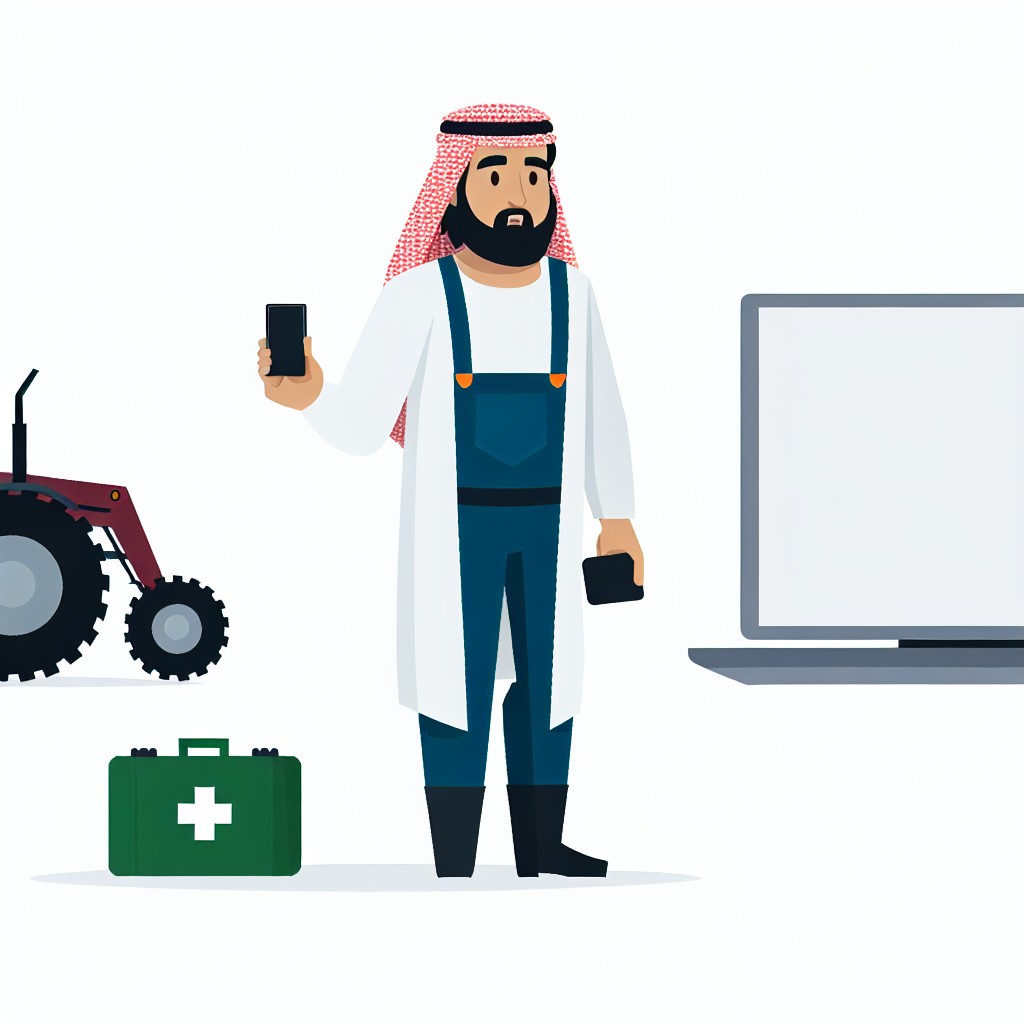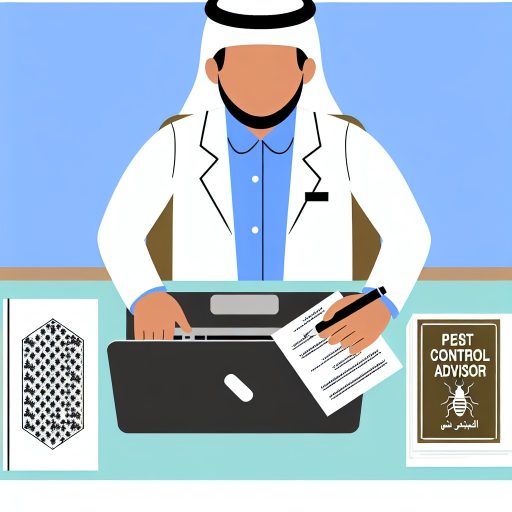Introduction
Being prepared for emergencies on the farm is crucial to ensure the safety of both humans and animals.
There are various types of emergencies that can occur on a farm, such as fires, natural disasters, and accidents.
Farmers need to have a well-thought-out plan in place to handle emergencies effectively and efficiently.
Conduct a Risk Assessment
- Identify potential hazards on the farm.
- Evaluate the likelihood and severity of each risk.
- Prioritize risks based on potential impact on the farm operations.
Identify Potential Hazards on the Farm
It is crucial to assess the farm for potential hazards.
These hazards could lead to emergencies.
Hazards may include machinery accidents, chemical spills, animal attacks, natural disasters, and structural collapses.
Evaluate the Likelihood and Severity of Each Risk
Once hazards are identified, determine the likelihood of each risk occurring.
Also, assess the severity of its potential impact.
For example, the likelihood of a chemical spill may be low, but its impact could be catastrophic.
Prioritize Risks Based on Potential Impact on Farm Operations
After evaluating the risks, prioritize them based on their potential impact on farm operations.
This helps focus on mitigating risks that pose the greatest threat to productivity and safety.
By conducting a thorough risk assessment, farmers can proactively identify emergencies.
They can implement preventive measures to reduce the likelihood of such events.
This approach minimizes the impact of emergencies and ensures the safety of workers and livestock.
Preparing an Emergency Response Plan for the Farm
One of the most important aspects of preparing for emergencies on the farm is developing an emergency response plan.
This plan should outline the steps to be taken in case of various emergencies that could arise.
Assigning roles and responsibilities to farm workers is crucial in ensuring a smooth and effective response to emergencies.
Each worker should know their specific duties and be prepared to act quickly in case of an emergency.
Including contact information for emergency services and nearby neighbors in the emergency response plan is essential.
This information should be easily accessible and updated regularly to ensure that help can be summoned quickly when needed.
Transform Your Career Today
Unlock a personalized career strategy that drives real results. Get tailored advice and a roadmap designed just for you.
Start NowKey Steps in Creating a Detailed Emergency Response Plan
- Conduct a thorough assessment of the farm to identify potential emergencies that could occur.
- Consider natural disasters such as floods or fires, as well as accidents involving machinery or livestock.
- Develop clear communication protocols to ensure that all farm workers are informed of an emergency situation.
- Use designated communication channels or procedures for calling emergency services.
- Identify escape routes and safe zones on the farm where workers can seek shelter in case of emergencies.
- Ensure that all workers are familiar with these locations and how to access them.
- Provide regular training sessions for farm workers on how to respond to emergencies.
- Practice drills for various scenarios and ensure that all workers are familiar with the emergency response plan.
- Regularly review and update the emergency response plan to ensure that it remains relevant and effective.
- Incorporate lessons learned from previous emergencies or changes in farm operations.
By developing a comprehensive emergency response plan and ensuring that all farm workers are trained and prepared, you can help minimize the impact of emergencies on your farm.
Preparation is key in handling emergencies effectively.
Delve into the Subject: Top Irrigation Systems for Agricultural Efficiency
Train farm workers on emergency procedures
- Provide training on how to respond to different types of emergencies.
- Conduct regular drills to ensure everyone knows what to do in a crisis.
- Emphasize the importance of communication and coordination during emergencies.
Importance of training for emergency readiness
Proper training is critical for handling emergencies on the farm.
By providing workers with the knowledge and skills they need to respond effectively, you minimize risks and ensure the safety of everyone involved.
Training should cover a wide range of scenarios, including fires, accidents, severe weather events, and medical emergencies.
Types of emergencies farm workers should be prepared for
It is essential to train farm workers on how to respond to various emergencies.
Whether it is a fire, chemical spill, injury, or weather-related disaster, employees should know appropriate steps to take.
Different emergencies require different responses, so workers must be prepared for any eventuality.
Benefits of conducting regular emergency drills
Conducting regular emergency drills ensures all farm workers know what to do when a crisis occurs.
Simulating different emergency scenarios tests employees’ knowledge and skills and identifies any gaps that need addressing.
Regular drills reinforce training and keep workers prepared at all times.
Role of communication and coordination during emergencies
Effective communication and coordination are crucial for successful emergency responses.
Farm workers should know how to alert others, communicate important information, and coordinate efforts to address emergencies.
Clear communication, teamwork, and collaboration are vital to managing crises on the farm.
Ensuring safety through comprehensive emergency preparedness
Training farm workers on emergency procedures is essential for the safety and well-being of everyone on the farm.
Providing comprehensive training, conducting regular drills, and emphasizing communication and coordination prepares your workforce to respond effectively.
Learn More: Advances in Poultry Disease Control
Invest in safety equipment.
- Purchase necessary safety equipment such as fire extinguishers, first aid kits, and protective gear.
- Ensure equipment is easily accessible and in good working condition.
- Train farm workers on how to use safety equipment effectively.
Having the right safety equipment on your farm can make a huge difference in emergencies.
Transform Your Career Today
Unlock a personalized career strategy that drives real results. Get tailored advice and a roadmap designed just for you.
Start NowIt is crucial to invest in the necessary tools that help prevent accidents or handle emergencies effectively.
Importance of Safety Equipment for Farm Operations
Safety equipment such as fire extinguishers, first aid kits, and protective gear are essential for farm tasks.
These tools protect your workers and minimize the risk of injuries or damage during emergencies.
Acquiring Essential Safety Equipment
It is important to cover the basics when purchasing safety equipment for the farm.
Invest in fire extinguishers suitable for different types of fires and first aid kits with essential supplies.
Also, acquire protective gear such as helmets, goggles, and gloves.
Maintaining Equipment in Good Condition
Simply owning safety equipment is not enough for protection.
Regularly check and maintain the equipment to ensure it works properly when needed.
Conduct routine inspections and replace any faulty items immediately.
Training Farm Workers on Effective Equipment Use
Owning safety equipment is one thing, but using it correctly during emergencies is crucial.
Take time to train your workers on how to operate fire extinguishers and administer first aid.
Also, teach proper use of protective gear and conduct regular drills to practice emergency responses.
By investing in safety equipment, you protect not only your farm and assets but also the well-being of your workers.
Safety should always be a top priority to ensure a safe and productive farm environment.
You Might Also Like: Regulations Governing Artificial Insemination Practices
Maintain good communication
When it comes to handling emergencies on the farm, one of the most important aspects is maintaining good communication.
Without clear communication, it can be challenging to ensure the safety of everyone involved.
Here are some key points to keep in mind:
Establish a communication plan for emergencies
Having a communication plan in place ahead of time can make a significant difference in how effectively you respond to emergencies.
This plan should outline how information will be shared, who will be responsible for communicating with different parties, and what protocols will be followed.
Transform Your Career Today
Unlock a personalized career strategy that drives real results. Get tailored advice and a roadmap designed just for you.
Start NowEnsure all farm workers have access to communication devices
It is essential to ensure that all farm workers have access to communication devices such as radios, cell phones, or walkie-talkies.
This will allow everyone to stay connected and informed during an emergency situation.
Make sure these devices are charged and in working condition at all times.
Have a designated meeting point in case of evacuation
In the event of an emergency that requires evacuation, it is crucial to have a designated meeting point where everyone can gather safely.
This meeting point should be easily accessible and well-known to all farm workers.
Regular drills and practice runs can help ensure that everyone knows where to go in case of an emergency.
By following these communication guidelines, you can help ensure that everyone on your farm stays safe and informed during emergencies.
Remember, clear communication is key to effective emergency response!
Explore Further: Impact of Extension Agents on Sustainable Farming

Build relationships with neighbors
It is essential for farmers to have a strong network of neighboring farms.
They can rely on this network in times of emergency.
Establishing and fostering good relationships with neighboring farmers can be a lifesaver.
Benefits of fostering good relationships with neighboring farms
- Attend local agricultural events and gatherings to meet neighboring farmers.
- Participate in community activities to build rapport with other farmers in the area.
- Exchange contact information with neighboring farms for easy communication during emergencies.
Ways to offer assistance and support during emergencies
- Be willing to lend a helping hand to neighboring farms in times of need.
- Share resources and equipment with neighboring farmers during emergencies.
- Collaborate on emergency preparedness plans with neighboring farms to ensure mutual assistance.
How to establish a network of trusted neighbors for crisis support
- Identify reliable neighbors who can provide support during emergencies.
- Create a collective emergency response plan with neighboring farms.
- Regularly communicate with neighboring farmers to strengthen the relationship and preparedness.
By building strong relationships with neighboring farms, farmers can create a reliable support system.
This network can make a significant difference during emergencies on the farm.
When it comes to handling emergencies on the farm, one of the most important things you can do is stay informed about weather conditions.
Monitoring Weather Forecasts to Enhance Preparedness
It is crucial to regularly check weather forecasts.
Doing so helps you prepare for any potential emergencies that may arise.
By staying up to date on weather conditions, you can take proactive steps.
These steps help protect your farm and livestock effectively.
Developing a Comprehensive Emergency Plan for Severe Weather
Creating a detailed emergency plan for severe weather events is essential.
Transform Your Career Today
Unlock a personalized career strategy that drives real results. Get tailored advice and a roadmap designed just for you.
Start NowExamples include storms and droughts that threaten farm safety.
Ensure everyone on the farm knows the plan clearly.
Prepare all members to act quickly when necessary.
Implementing Precautions to Safeguard Livestock and Crops
During extreme weather, it is important to take precautions.
These measures protect your livestock and crops from damage.
Actions may include moving animals to sheltered areas and covering crops.
Securing equipment also helps minimize risks during harsh conditions.
By following these guidelines and staying prepared, you improve emergency handling.
You also ensure the safety of your animals and livelihood.
Effective Approaches to Farm Emergency Preparedness
Handling emergencies on the farm requires a proactive mindset to protect your property and workers.
Developing a detailed emergency plan helps you respond quickly to unexpected situations.
Keep emergency contact information accessible at all times to reduce response delays.
Conduct regular safety drills to ensure that everyone knows their roles during emergencies.
Invest in essential safety equipment to enhance your ability to manage crisis situations.
Preparation significantly lessens the impact of emergencies on farm operations and recovery time.
Prioritizing safety and well-being is vital for all farmers and farm workers.
Adopting preventive measures helps to avoid many emergencies before they arise.
Responding effectively when emergencies occur safeguards your farm, income, and team members.




